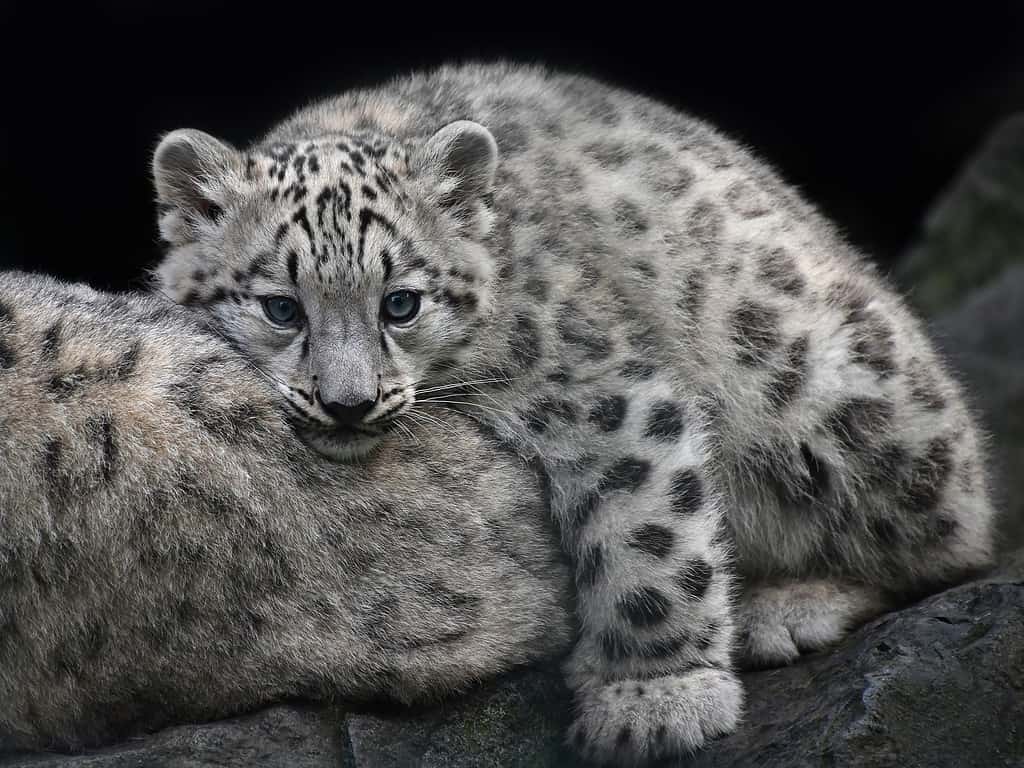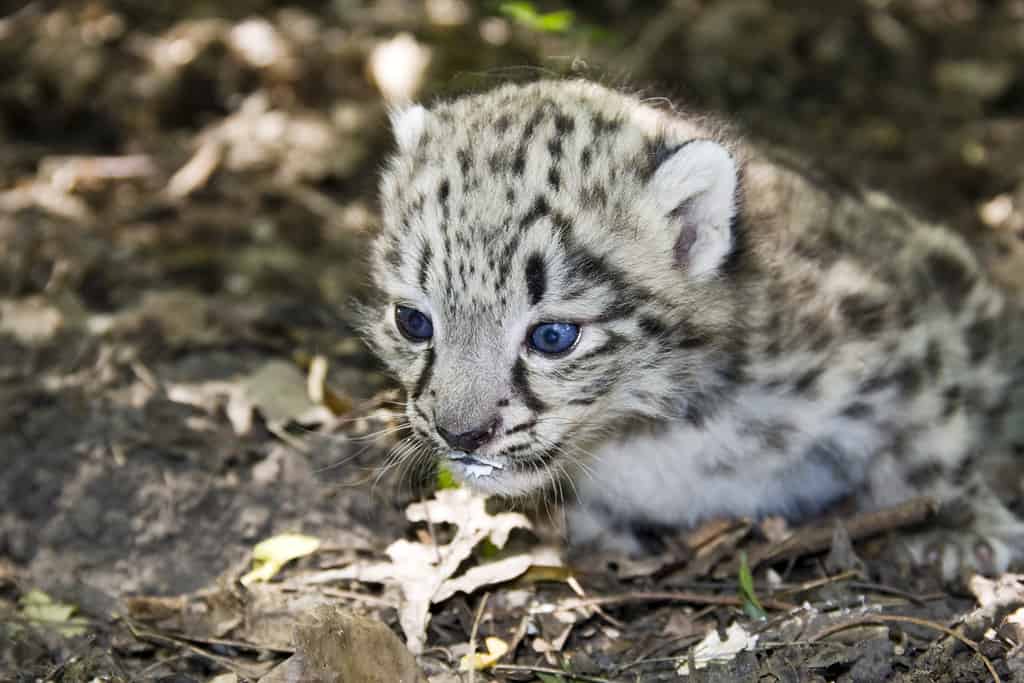
Nestled in the rarefied air, jagged rocks, and biting cold of the Himalayan Mountains, one of the most captivating big cats on Earth calls the soaring heights of this high alpine realm home—the snow leopard. Often hailed as the “ghost of the mountains,” these elusive and iconic felines gracefully roam the harsh terrain, epitomizing untamed elegance and wild beauty. While the presence of adult snow leopards is truly awe-inspiring and jaw-dropping, it is equally enchanting to witness just how adorable and incredible their precious offspring are. So, let’s dive in and take a look at 10 cute pictures and 10 amazing facts about baby snow leopards!
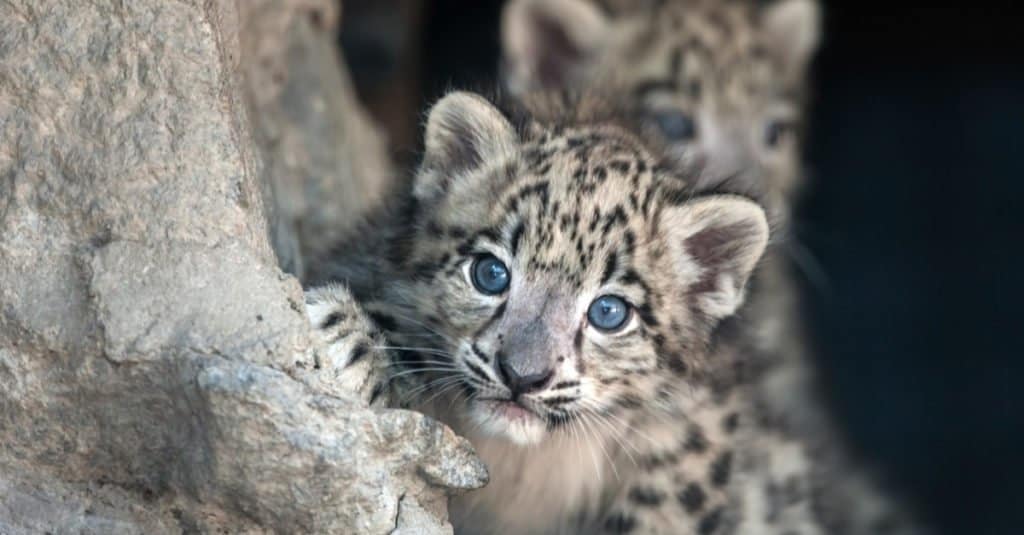
Snow leopards are a unique species of big cats that live in the mountains of South and Central Asia. However, there is still much we don’t know about these mysterious creatures due to their solitary and secretive behavior, and because they live in inaccessible areas. Snow leopards typically live at elevations ranging from 9,800 to 14,800 feet!
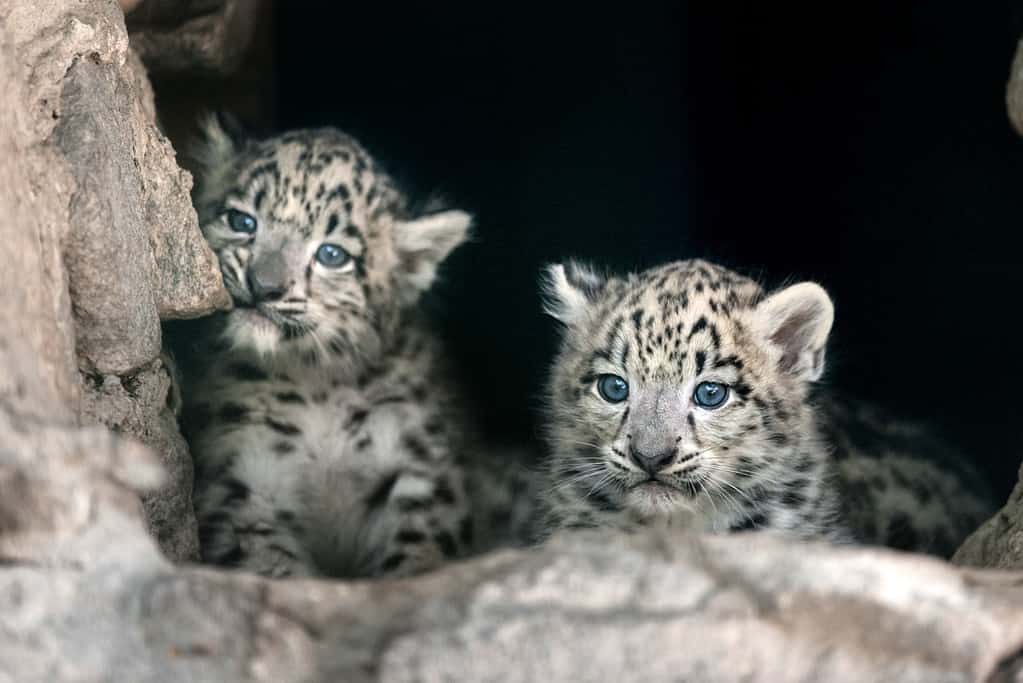
Baby snow leopards are born in this remote and secluded environment, serving as a shelter from lurking predators and other dangers. The lofty elevations of this habitat produce frigid temperatures, but fortunately, newborn cubs are born with lush, fur coats.
Surprisingly, baby snow leopards are more closely related to tigers than leopards.
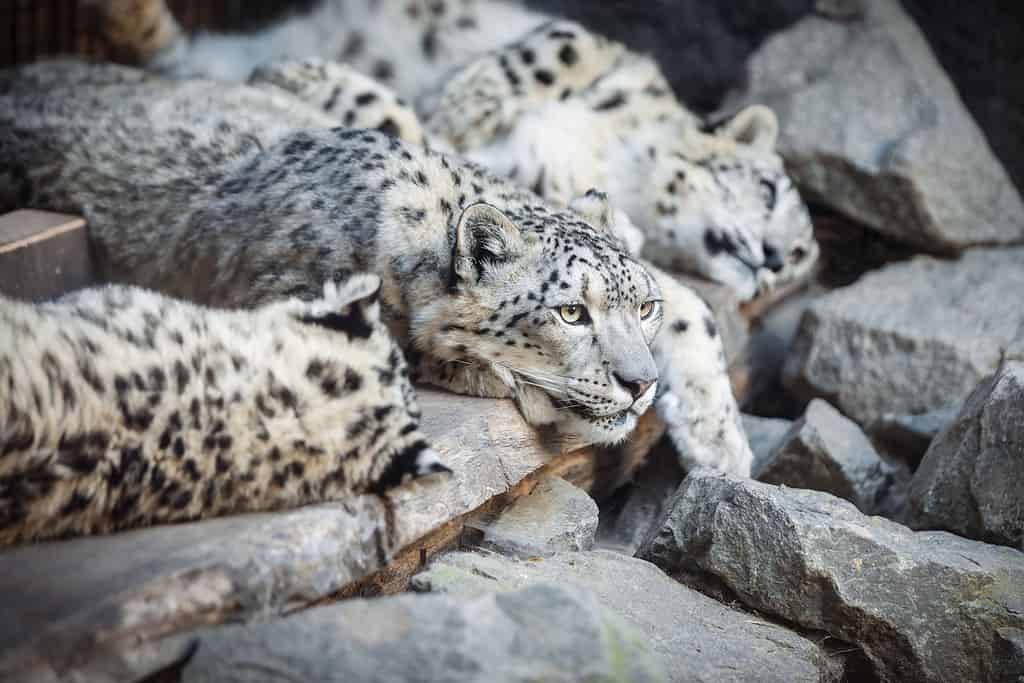
Snow leopards have a very short mating season in late winter or early spring. Because of this, snow leopard cubs are usually born around the same time. Following a gestation period of around 90 to 100 days, female snow leopards typically give birth to two or three cubs between April and July. However, the majority of snow leopard cubs are born in June or July, and many of them are born on the exact same day!
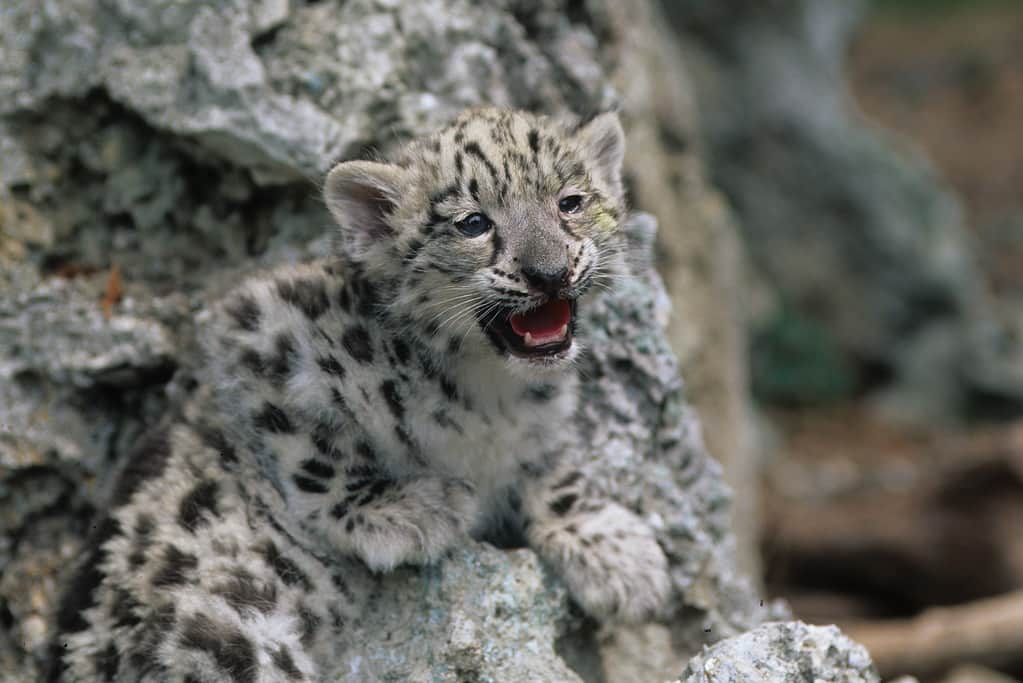
Snow leopards lead solitary lives in the lofty heights of Asia’s mountainous regions. Male and female snow leopards usually only come together during a brief mating season, which typically spans around one week.
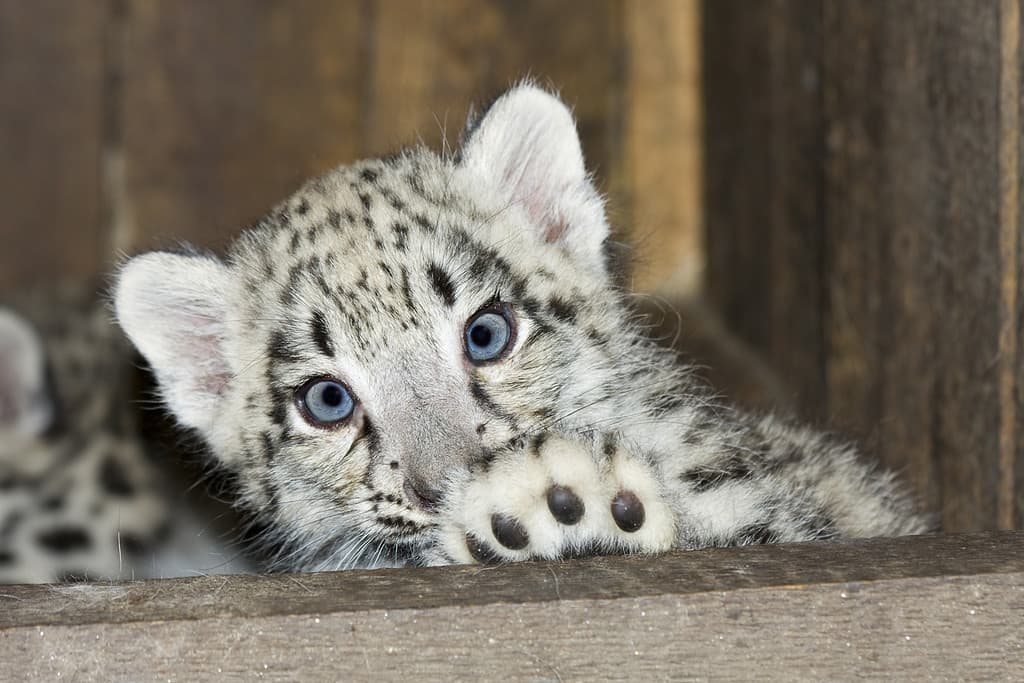
After mating, female snow leopards venture off on their own to give birth and raise their cubs alone. Although they typically possess extensive territories, once the cubs arrive, leopard mothers modify their behavior and stay within a smaller area to stay close to their little ones. At around three months of age, the cubs start exploring the world beyond their den in the company of their mothers. Usually, by six months, they start to accompany their mothers outside the den. Under her watchful eye, the cubs learn invaluable survival skills, with their mothers teaching them how to hunt and navigate the challenging terrain, targeting prey such as ibexes or Himalayan blue sheep.
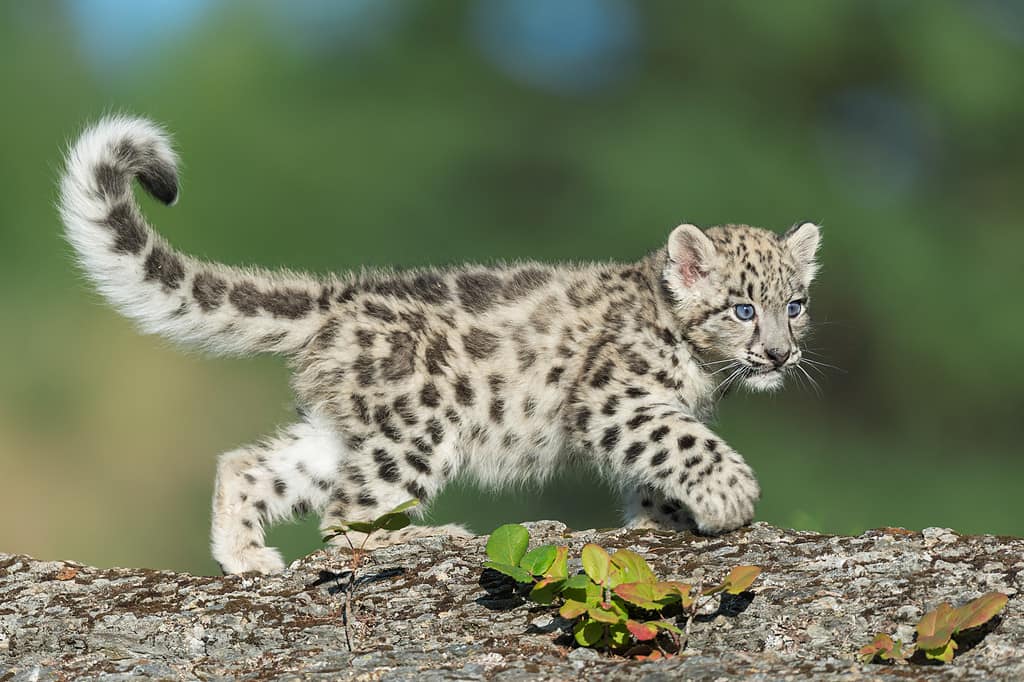 Sometimes, snow leopards are called “once,” which comes from their genus name, Uncia.Although they are born blind and helpless, baby snow leopards enter the world equipped with a full coat of thick hair to protect them from the cold of their harsh environment or habitat. They have beautiful white or gray fur and black spots on their heads and necks.
Sometimes, snow leopards are called “once,” which comes from their genus name, Uncia.Although they are born blind and helpless, baby snow leopards enter the world equipped with a full coat of thick hair to protect them from the cold of their harsh environment or habitat. They have beautiful white or gray fur and black spots on their heads and necks.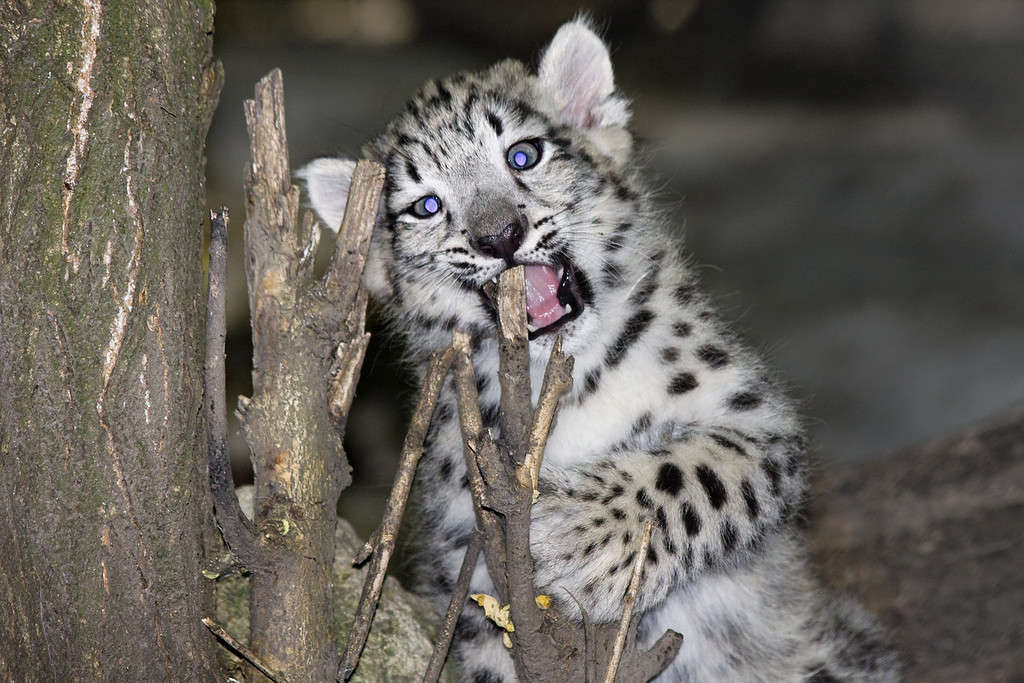
Baby snow leopard cubs are incredibly well-adapted to survive in the cold, mountainous environments of their native range. They possess many remarkable traits that enable them to thrive in such harsh conditions, such as their thick, camouflaged fur, which provides exceptional insulation. Additionally, their small, rounded ears minimize heat loss, while their homogenous and broad paws act like their built-in snowshoes, distributing their body weight on snowy terrain. They also have additional fur on the underside of their paws that provides traction on steep and unstable surfaces.

Unfortunately, baby snow leopards are a vulnerable species, with their populations steadily dwindling in the wild. This is due to the loss of their habitats, rampant poaching, and retaliatory killings by local communities. Snow leopards, however, are not only stunning animals, but they also play a vital role in maintaining the delicate balance of the Himalayan ecosystem by regulating the population of rodents and small mammals. In the wild, the mortality rate for these cute cubs is alarmingly high, and even as adults, their lifespan is limited to only 15 to 18 years. This is a stark contrast to their lifespans in captivity, where they can live up to 25 years.
